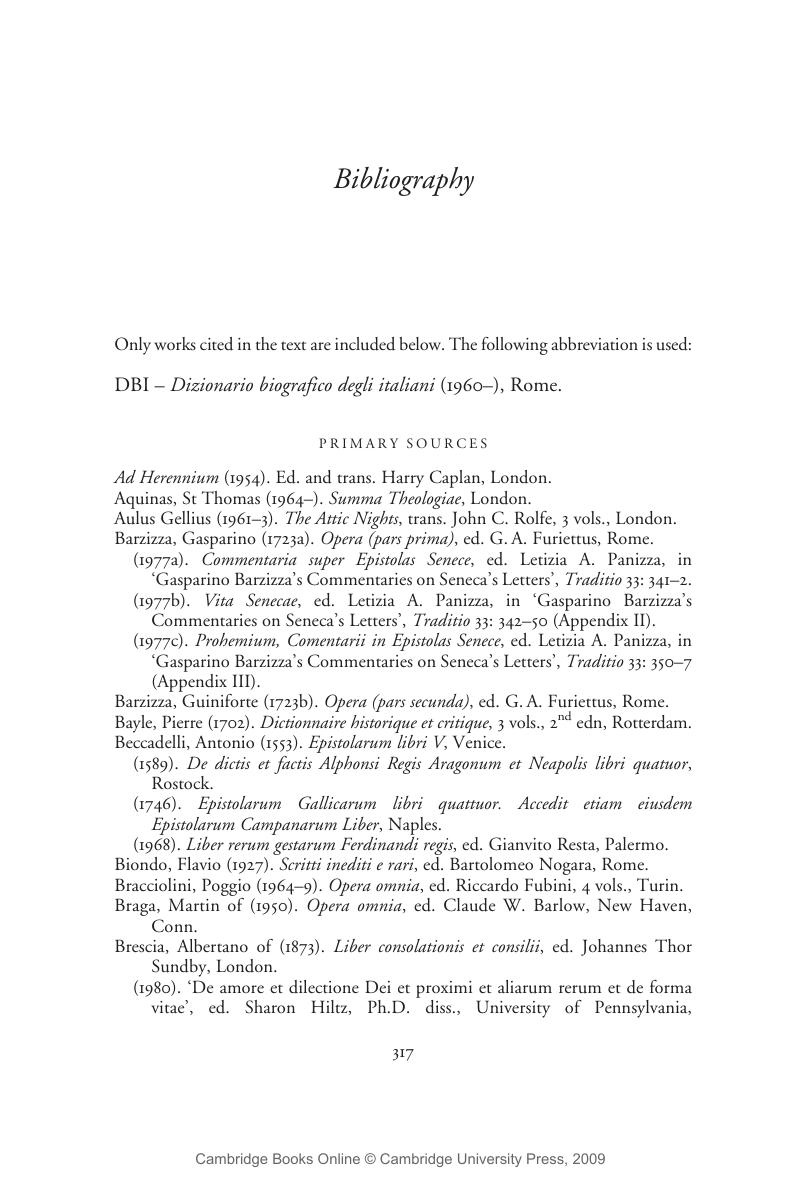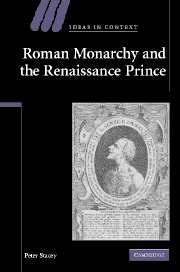Book contents
- Frontmatter
- Contents
- Acknowledgements
- Introduction
- PART I THE ROMAN PRINCEPS
- PART II THE ROMAN THEORY AND THE FORMATION OF THE RENAISSANCE PRINCEPS
- PART III THE HUMANIST PRINCEPS IN THE TRECENTO
- PART IV THE HUMANIST PRINCEPS FROM THE QUATTROCENTO TO THE HIGH RENAISSANCE
- PART V THE MACHIAVELLIAN ATTACK
- Conclusion
- Bibliography
- Index
- IDEAS IN CONTEXT
- References
Bibliography
Published online by Cambridge University Press: 22 September 2009
- Frontmatter
- Contents
- Acknowledgements
- Introduction
- PART I THE ROMAN PRINCEPS
- PART II THE ROMAN THEORY AND THE FORMATION OF THE RENAISSANCE PRINCEPS
- PART III THE HUMANIST PRINCEPS IN THE TRECENTO
- PART IV THE HUMANIST PRINCEPS FROM THE QUATTROCENTO TO THE HIGH RENAISSANCE
- PART V THE MACHIAVELLIAN ATTACK
- Conclusion
- Bibliography
- Index
- IDEAS IN CONTEXT
- References
Summary

- Type
- Chapter
- Information
- Roman Monarchy and the Renaissance Prince , pp. 317 - 331Publisher: Cambridge University PressPrint publication year: 2007



